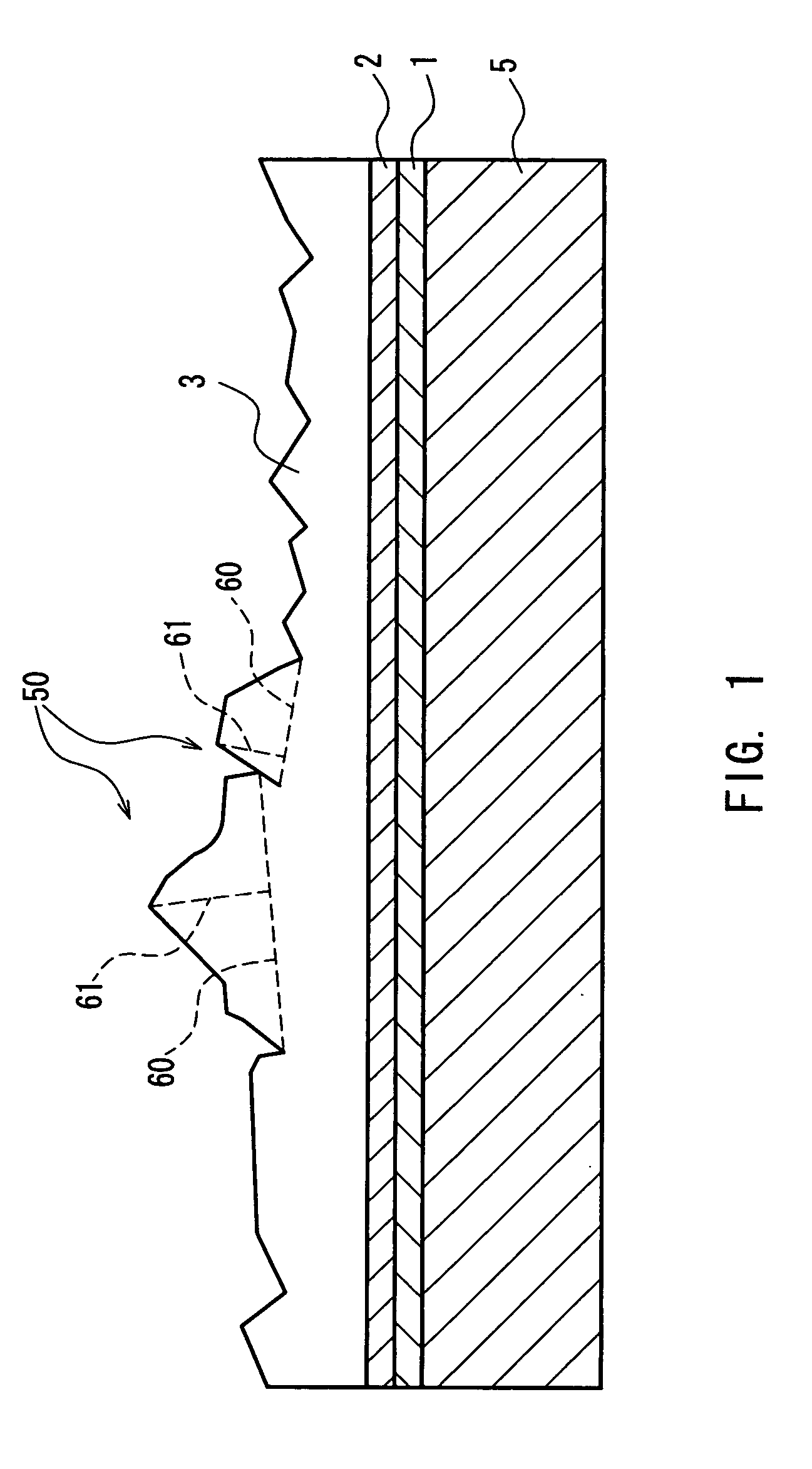Conductive film, production method therefor, substrate provided with it and photo-electric conversion device
a technology of photoelectric conversion device and conductive film, which is applied in the direction of conductive layers on insulating supports, instruments, transportation and packaging, etc., can solve the problem of drop in the conversion efficiency of solar cells in an initial period of light irradiation
- Summary
- Abstract
- Description
- Claims
- Application Information
AI Technical Summary
Benefits of technology
Problems solved by technology
Method used
Image
Examples
working examples
[0045] Hereinafter, Working Examples are used to describe the invention described in detail. However, the invention is not limited to the following examples.
working examples 1 to 3
[0046] A 4 mm thick soda-lime glass sheet cut to 450.times.450 mm was placed on the mesh belt and sent through the heating furnace, heating it up to approximately 600.degree. C. As the heated glass sheet was delivered, coaters arranged above the delivery route supplied a mixture gas A constituted by monosilane, oxygen, and nitrogen, forming a silicon oxide thin film (undercoating film) with a film thickness of 25 nm on the glass sheet. After cooling the glass sheet, it was once again placed on the mesh belt and sent through the heating furnace, heating it up to approximately 600.degree. C. As the heated glass sheet was delivered, coaters arranged above the delivery route supplied a mixture gas B constituted by monobutyltin trichloride (vapor), oxygen, water vapor, nitrogen, and trifluoroacetate, forming a transparent conductive film made of fluorine-containing tin oxide (SnO.sub.2:F) on the silicon oxide thin film. The composition ratio of the components in the mixture gas B was 0.5...
working examples 4 and 5
[0049] Samples of photoelectric conversion elements were produced in the same manner as in Working Example 1 except that the composition ratio of the components in the mixture gas B was altered to 0.9 mol % of tin tetrachloride (vapor), 35 mol % to 37 mol % of water vapor, 62 mol % to 64 mol % of nitrogen, and 0.06 mol % of hydrogen fluoride, and the film thickness was changed to 810 to 840 nm. With respect to these samples, in the same manner as in Working Example 1, the height and the percentage occupied by the projections of the conductive film surface were calculated, the haze ratio was measured, and the photoelectric conversion efficiency and whether there was interface peeling was evaluated. The results are shown together in Table 1 below.
PUM
| Property | Measurement | Unit |
|---|---|---|
| thickness | aaaaa | aaaaa |
| thickness | aaaaa | aaaaa |
| haze ratio | aaaaa | aaaaa |
Abstract
Description
Claims
Application Information
 Login to View More
Login to View More - R&D
- Intellectual Property
- Life Sciences
- Materials
- Tech Scout
- Unparalleled Data Quality
- Higher Quality Content
- 60% Fewer Hallucinations
Browse by: Latest US Patents, China's latest patents, Technical Efficacy Thesaurus, Application Domain, Technology Topic, Popular Technical Reports.
© 2025 PatSnap. All rights reserved.Legal|Privacy policy|Modern Slavery Act Transparency Statement|Sitemap|About US| Contact US: help@patsnap.com



